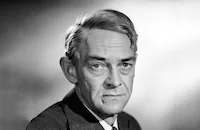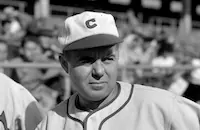The Raging Tide
Brief Synopsis
Cast & Crew
George Sherman
Shelley Winters
Richard Conte
Stephen Mcnally
Charles Bickford
Alex Nicol
Film Details
Technical Specs

Synopsis
In San Francisco, racketeer Bruno Felkin murders his rival Marty Prince, and calls the police to report the death, then escapes into the night. Bruno first goes to his girl friend Connie Thatcher's apartment, believing she will provide him with an alibi, but when he discovers she is not home, hides in a boat at the wharf which sails out at four the next morning. In the meantime, police detective Kelsey has already pegged Bruno as a likely suspect, and questions Connie. Connie, a tough hat check girl whom Bruno treats like a princess, is shocked to learn that Bruno may be a murderer and defends him, although she allows Kelsey to remain in her apartment to see if Bruno returns. When the boat Taage reaches the open sea, Bruno overhears the Swedish captain, Hamil Linder, arguing with his grown son Carl, who hates his father's "old world" ways as much as he hates working as a fisherman. Carl is surprised when he sees Bruno through the window, and Hamil, a judicious and compassionate man, allows Bruno to stay aboard after he explains that he fell asleep in the boat because he was drunk and lost his job. Later, when Bruno offers Carl a job collecting money from resistant customers so that Bruno can maintain his business while he hides, Carl leaps at the chance. Bruno stays aboard the boat and learns the fishing trade while Carl runs his collection business on land. Bruno comes to appreciate the beauty of the sea, Hamil's kindness and philosophical nature, and the honest hard work. Carl, meanwhile, befriends Connie when he brings money from Bruno to pay for her education. As time passes, Kelsey hangs around the docks and has Connie followed. Bruno learns that an elderly seaman, Corky Mullins, saw him running to the pier on the night of the murder, so Bruno gives Corky enough money to fix his unreliable boat and put out to sea. One day Hamil berates Carl for his sloppy work on the boat, and Carl knocks his father off the deck onto the pier. Bruno becomes enraged, as he has already warned Carl that he should treat his father with respect, and attacks Carl. After Bruno beats Carl in the fistfight, Hamil tends to his son's injuries, and thanks Bruno for standing up for him. One day, Kelsey tells Connie, who has fallen in love with Carl despite her loyalty to Bruno, that he knows about her "new boyfriend," and that Carl purchased a new car in Corky's name because he is on probation for auto theft. Connie denies that Carl is her boyfriend, but later confronts him. Carl admits the truth, and she worries that Kelsey will find Bruno through Carl. On the next fishing trip, Carl apologizes to his father for pushing him, marking his first step toward an emotional reconciliation. One day, the fishermen realize that Corky is dead after finding a piece of his boat floating in the water. Bruno secretly meets with Connie and after reaffirming their love, he asks her to obtain letterhead from Marty Prince's company. When they meet the next night, Bruno tells Connie that he plans to sail for South America and wants her to accompany him, but she must first call Kelsey and identify Carl as Marty's killer. Connie tries to protest, but Bruno quiets her with a kiss and leaves. That night, Carl tells Bruno that he has decided to quit working for him and return to fishing to help his father, so that he can marry Connie. Carl also demands that Bruno leave the boat after they return to the dock. Bruno receives the news quietly, having already hidden the murder weapon among Carl's clothes. Connie reluctantly tells Kelsey the truth about Bruno's whereabouts. That night, the Taage is caught in a violent storm, and Hamil, who has become a father figure to Bruno, tells Bruno that he is grateful for steering Carl back to him, and thinks of him as a son. Bruno feels guilty for trying to frame Carl and removes the gun. As the storm worsens, Bruno and Carl struggle to keep the boat afloat. Carl is washed overboard by a giant wave, and, knowing that he cannot swim, Bruno dives into the ocean to rescue him. Although he gets Carl safely aboard, Bruno is drowned by a massive wave. Later, Kelsey gently delivers the news of Bruno's death to Connie. Hamil retires from fishing and turns his business over to Carl, who has plans to marry Connie.

Director
George Sherman
Cast

Shelley Winters

Richard Conte

Stephen Mcnally

Charles Bickford

Alex Nicol

John Mcintire

Tito Vuolo
Chubby Johnson
Minerva Urecal
Syd Saylor
John "skins" Miller
Pepito Perez
Robert O'neil

Ray Walker
Irvin Berwick
Crew
Irvin Berwick
Hilyard Brown
Leslie I. Carey
Oliver Emert
Ernest K. Gann
Russell A. Gausman
Bernard Herzbrun
David S. Horsley
Corson Jowett
Ted J. Kent
Lew Leary
Harvey Mcdowell
Russell Metty
John W. Rogers
Aaron Rosenberg
Frank Shaw
Frank Skinner
Joan St. Oegger
Bill Swartz
Bill Thomas
Bud Westmore

Film Details
Technical Specs

Quotes
Little men are smarter. There's not so much space between their ears.- Connie Thatcher
Trivia
Notes
The working title of this film was Fiddler's Green. According to a March 1951 Hollywood Reporter news item, technical advisor Harvey McDowell was also cast in a role, but his appearance in the final film has not been confirmed. Some scenes were shot on location in San Francisco, CA. Additional Hollywood Reporter news items state that Broadway actor Jesse White was originally cast in the role of "General Ball," but was replaced by Chubby Johnson after White contracted a virus. A July 1953 Hollywood Reporter article reported that the Ferry and Pickman agency sued Charles Bickford for $2,500 in commissions for the film and were awarded the money by SAG. Bickford, however, stated that he acted in the film after his contract with the agency expired. The disposition of the suit is not known.












